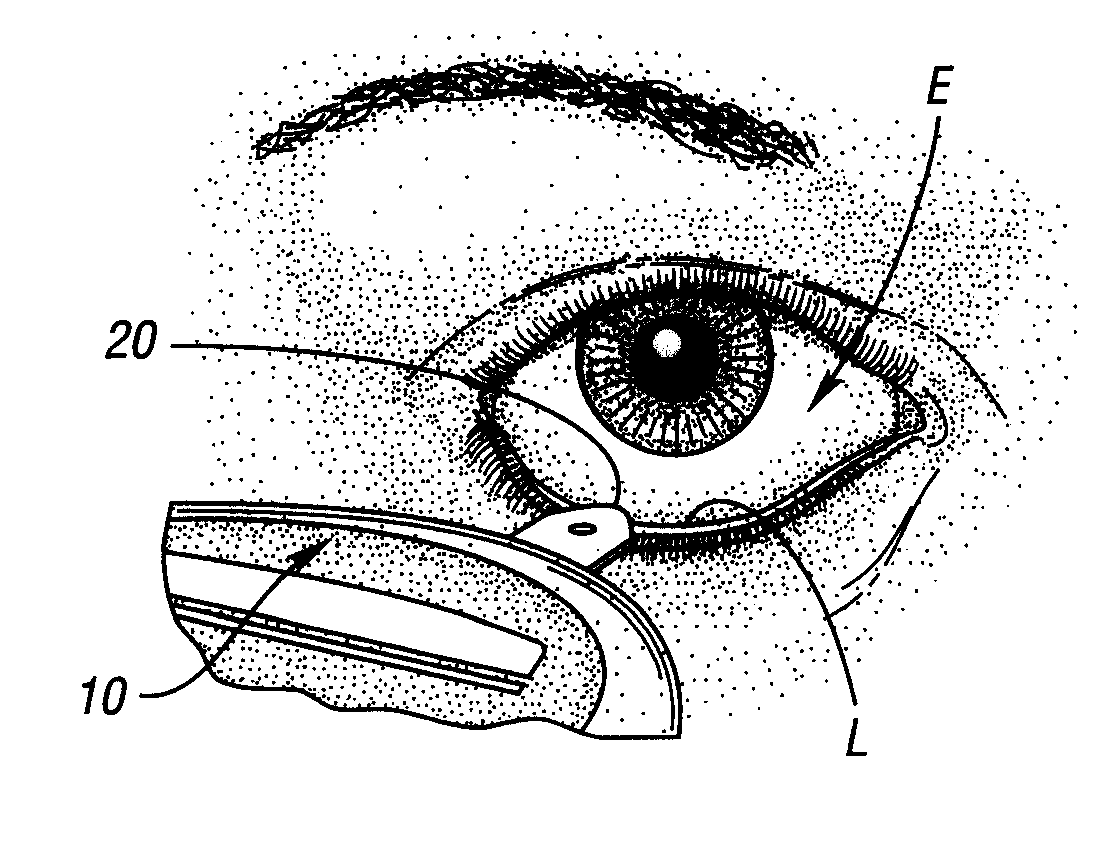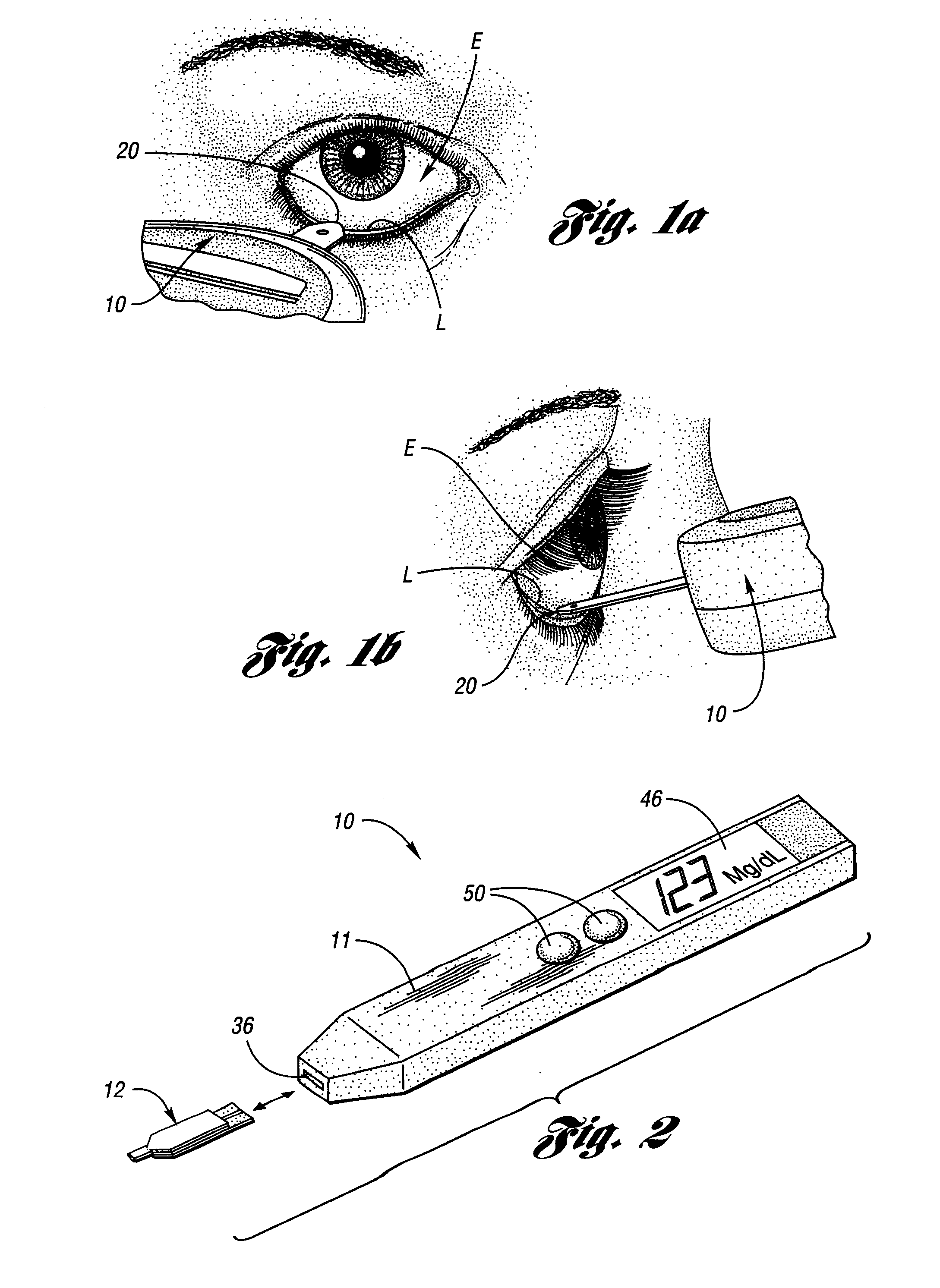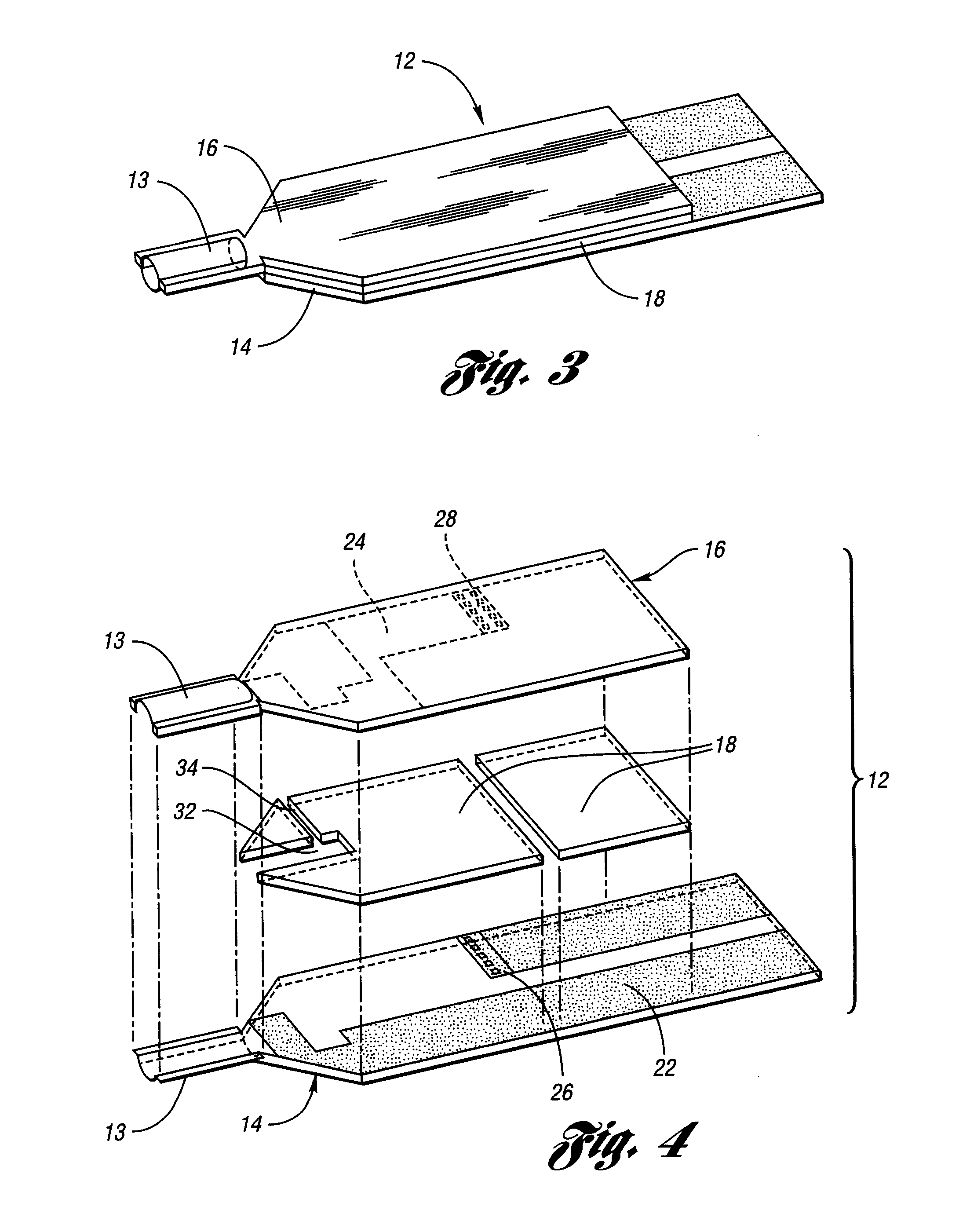Method and Apparatus for Non-Invasive Monitoring of Blood Substances Using Self-Sampled Tears
a blood substance and self-sampling technology, applied in the field of non-invasive monitoring of blood substances, can solve the problems of limited patient compliance with self-testing, three-fold increase in hypoglycemic incidents, and disability and death
- Summary
- Abstract
- Description
- Claims
- Application Information
AI Technical Summary
Benefits of technology
Problems solved by technology
Method used
Image
Examples
Embodiment Construction
)
[0037] The method and apparatus of the present invention provide for the practical, non-invasive determination of the concentrations of substances, particularly glucose, in human tears in order to indirectly monitor the level of this important analyte in blood. The method and apparatus described herein are designed for the special limitations of analysis of tear fluid, namely the low glucose concentration in tears compared with blood and the small sample volume available. The present invention advances tight glycemic control of diabetes by permitting users to monitor their blood glucose levels by self-measuring the glucose levels in their tears, wherein the tear fluid sample is easily obtained by a user and accurate results are immediately available.
[0038] By way of background, the primary aqueous component of tears is secreted by the lacrimal gland, which is located beneath the outer portion of the upper eyelid. In this gland, a fraction of the glucose in blood crosses into the t...
PUM
| Property | Measurement | Unit |
|---|---|---|
| concentrations | aaaaa | aaaaa |
| concentrations | aaaaa | aaaaa |
| volume | aaaaa | aaaaa |
Abstract
Description
Claims
Application Information
 Login to View More
Login to View More - R&D
- Intellectual Property
- Life Sciences
- Materials
- Tech Scout
- Unparalleled Data Quality
- Higher Quality Content
- 60% Fewer Hallucinations
Browse by: Latest US Patents, China's latest patents, Technical Efficacy Thesaurus, Application Domain, Technology Topic, Popular Technical Reports.
© 2025 PatSnap. All rights reserved.Legal|Privacy policy|Modern Slavery Act Transparency Statement|Sitemap|About US| Contact US: help@patsnap.com



